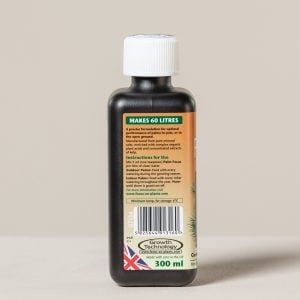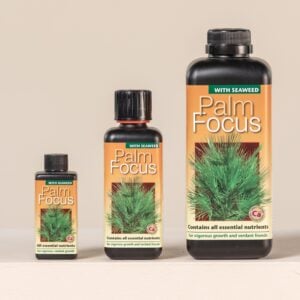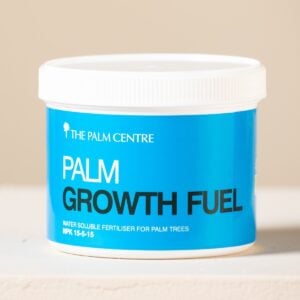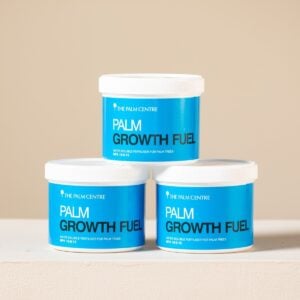Cycad plants are hardy, evergreen gymnosperms (cone-bearing plants) that grow in sand or hard rock. Cycads are dioecious plants; there are separate male and female plants. The female plant produces seeds, and the male plant produces cones filled with pollen.
The most popular cycad is the sago palm. They are slow growing and have a long life. They usually grow to 3 to 5 feet in height, although they can sometimes reach 10 feet in height.
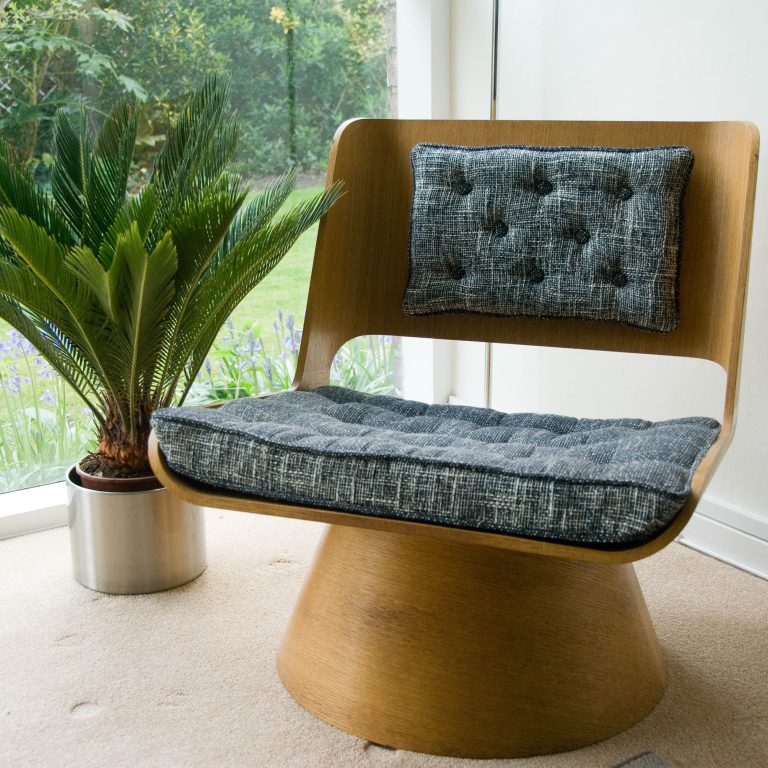
Positioning
Cycads sold for indoor use by the Palm Centre will be happy in the average home. Many will cope with the dry air and low light levels that winter and central heating produce.
To get the best from your cycad you should keep it away from any direct sources of heat and choose a location where it receives bright natural daylight, but avoid direct sunshine through glass as this can burn the leaves.
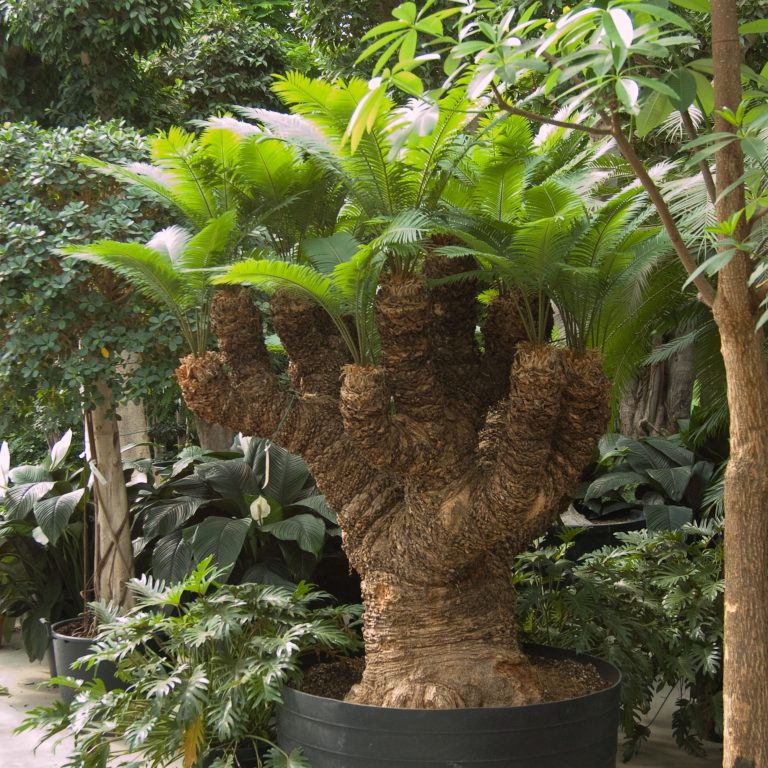
Soil
Generally speaking, cycads are not fussy about soil so any general purpose compost, mixed with some John Innes no.3 and perhaps some slow release fertiliser like Osmocote, would be a good basis for your plant to thrive.
When planted in the ground, make sure that you’re planting your Cycad in free draining soil. Use multipurpose compost to backfill the planting hole and create a ring of soil around the hole to contain the water.
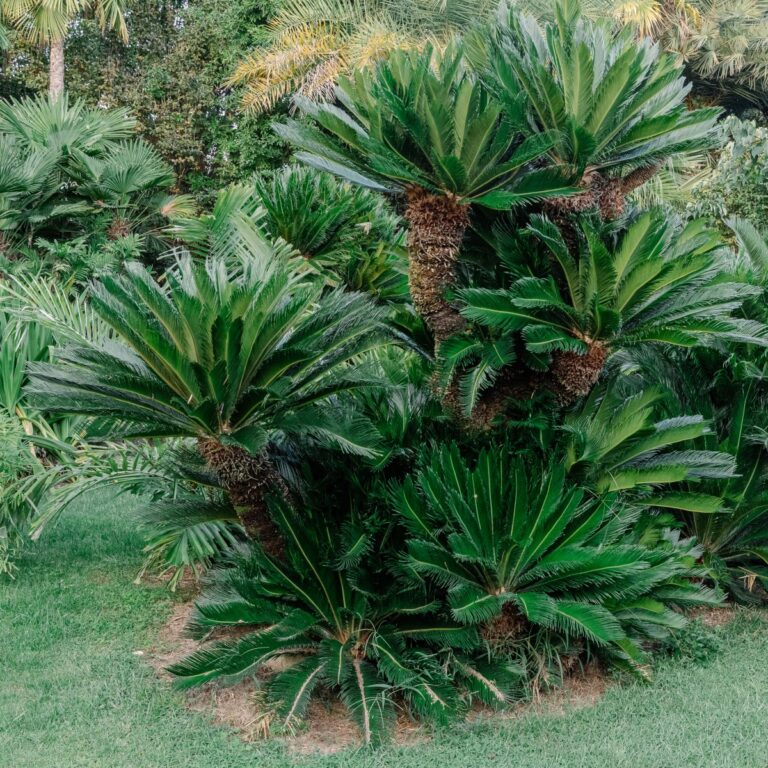
Winter care
Where cycads are grown outdoors it is best to give them adequate protection against frost except in the very mildest locations. Tying up the leaves and wrapping with several layers of fleece and/or an old blanket is a tried and tested method.
Similarly a wrapping of loft insulation with an outer covering of fleece is effective. Additional overhead cover of a ‘pop-up’ mini-greenhouse or cloche will improve the protection.
Cycas revoluta is grown in many parts of Japan where the cold winters necessitate protection, and they have raised the construction of protection structures into an art form!
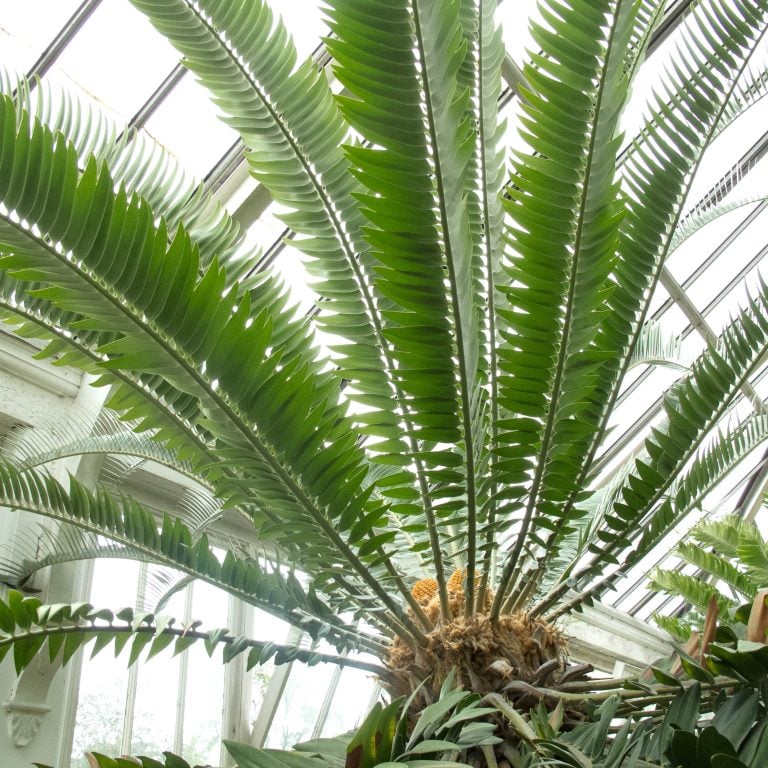
Watering
Indoor cycads should be kept moist and never be allowed to dry out. During the summer you will be watering as much as twice a week to maintain the moisture levels, whereas during winter you should water very sparingly.
Don’t be tempted to over-water; most cycads dislike their roots sitting in a saucer of water and the soil should be moist, not saturated. Although not essential, palms will benefit from being watered with rain water or water from a softener.
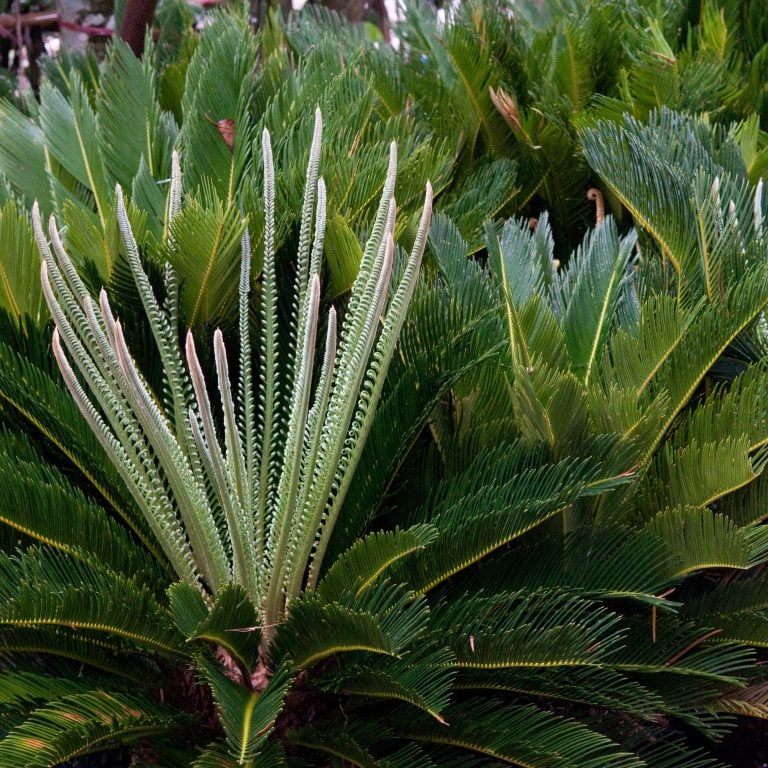
In the growing period
Cycas revoluta periodically produce a lovely new flush of leaves called “break” which compensates for its slow-growing habit.
These tender new leaves emerge all at once in a crowning or circular pattern or feather-like rosette. Several weeks later, the leaves become harder, and stiffer. When plant’s reach the reproductive stage, the semi-glossy green leaves have strongly recurved edges.
While the new leaves are still tender, avoid repositioning or rotating the plant, as the leaves will try to reorientate towards the light making the leaves curled and the needles stiffen all bent and curled.
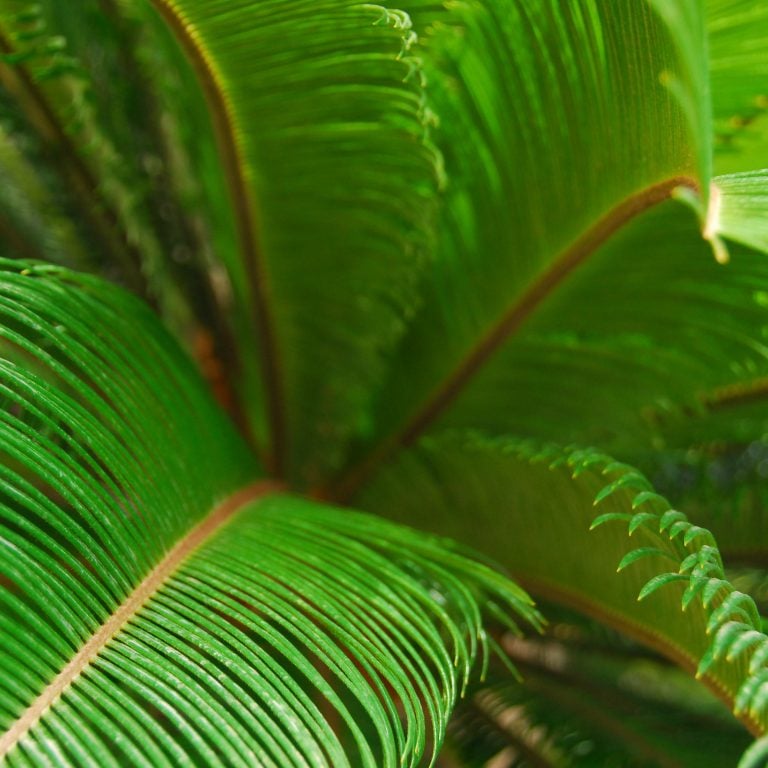
Growing Cycads outdoors
Most cycads will benefit from spending the frost-free months outside in the garden, where the air movement and sunlight will promote healthy, strong growth. Once the threat of frost has past, generally in May, move your cycad outside into a shaded position then gradually move into full sun over a period of a week or two to acclimatise the plant slowly to its new position. Thereafter your cycad will enjoy a position in full sun on the patio or in the garden until the threat of frost in autumn.
In mild regions it is possible to grow some cycads e.g. Cycas revoluta out of doors permanently where they will give a unique exotic effect. Be aware that there are certain specific problems that can restrict their use.
Cycads can be rather temperamental about growing – they don’t necessarily produce a new flush of growth every spring and often take a gap year or two.
Temperatures much below -5C will damage the leaves, so they will need a position away from severe frost or substantial wrapping and lagging, to keep the old foliage in good condition until such time as they decide to grow more.
Copious feed and water in spring are said to stimulate new flushes of growth.
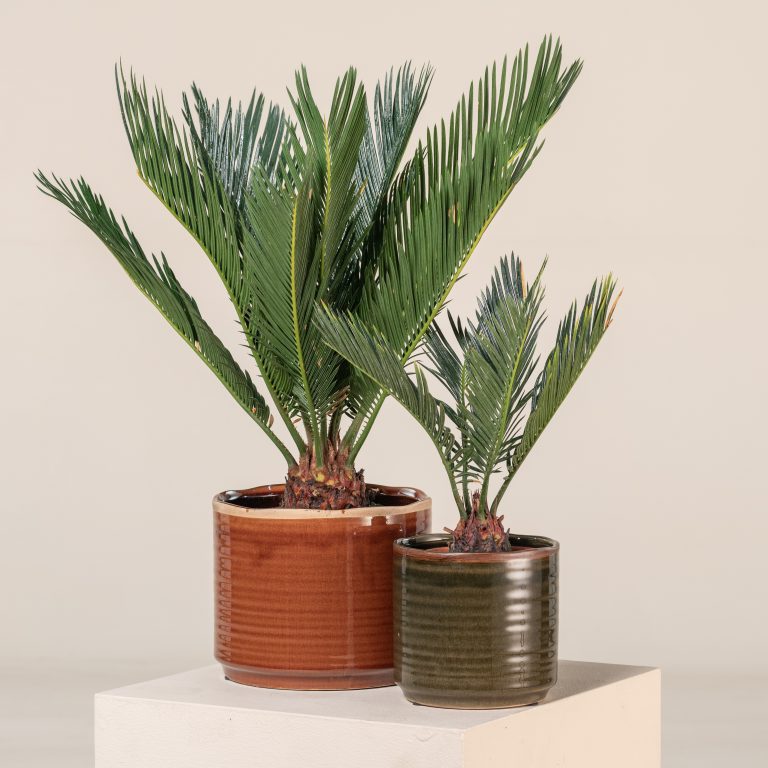
Growing it indoor
An inevitable problem encountered by growing cycads indoors is the amount of dust that builds up on the leaves over time. This can restrict the amount of light that gets through to the plant.
‘Leaf shine’ products should be avoided. The best way to refresh your cycad is to wipe the leaves down with slightly soapy water or stand it outside during a summer shower.
Feeding your cycads
During the growing season, fertiliser is recommended to be applied. This is especially required for plants in pots.
Avoid overfeeding and always follow the correct dosage when applying fertiliser.
